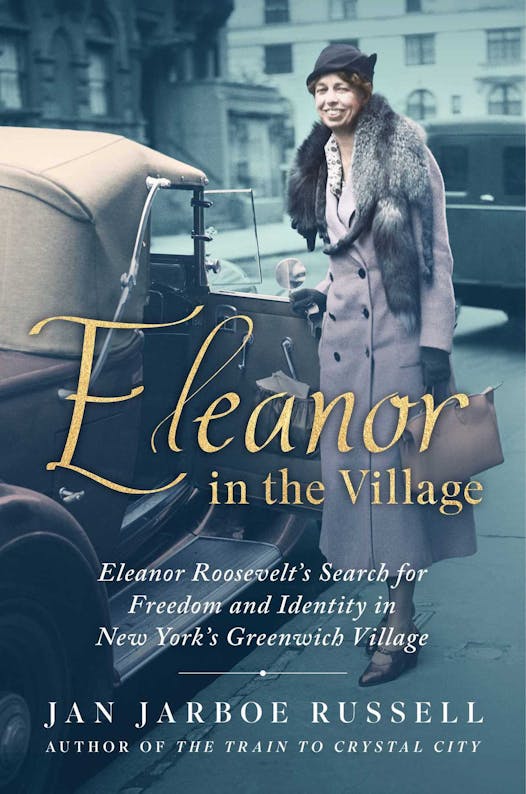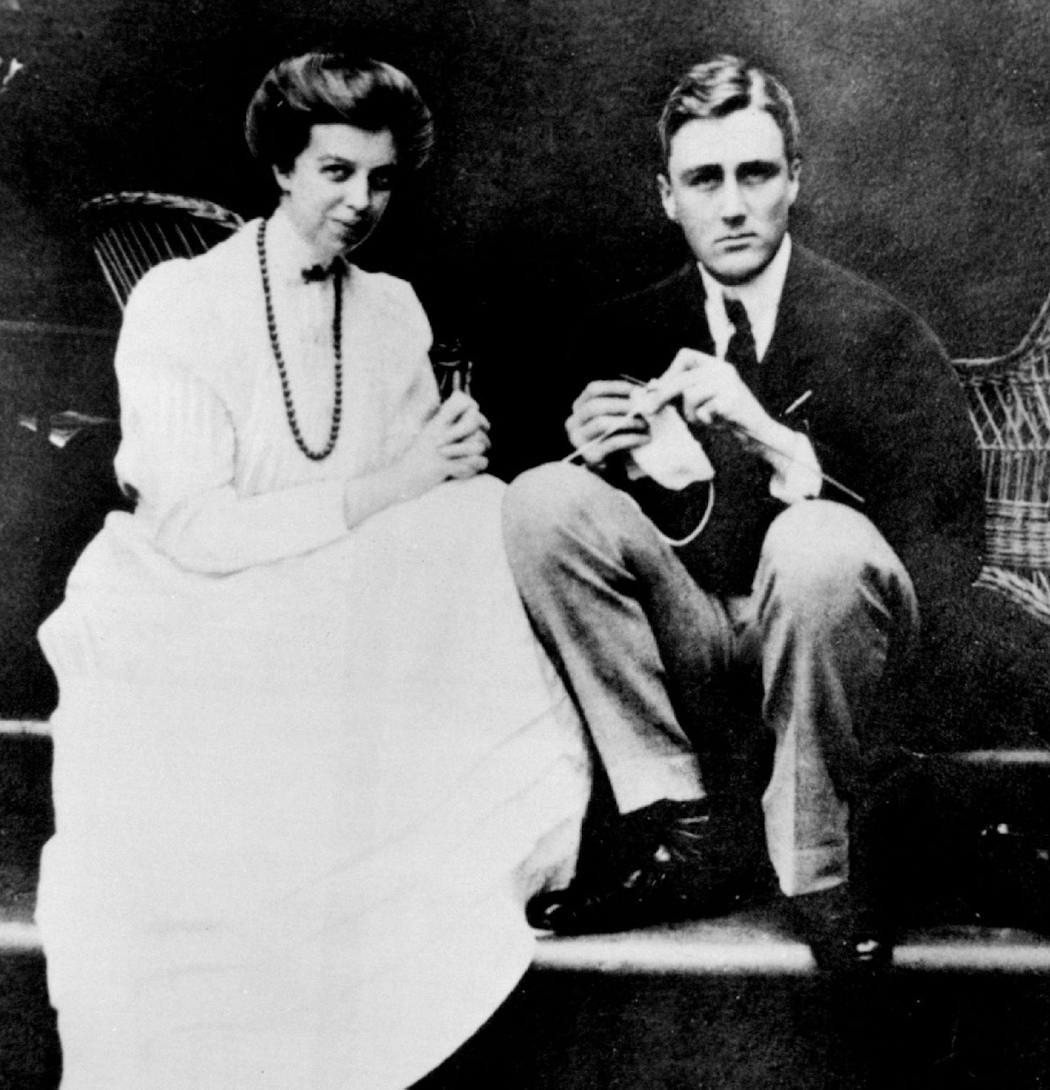Eleanor Roosevelt's greatest invention was herself.
Born into a society family at the height of the Victorian age, she was expected to be polite, subservient and silent. Initially, she was — until she decided to be blunt, independent and heard.
"Eleanor in the Village: Eleanor Roosevelt's Search for Freedom and Identity in New York's Greenwich Village," by Jan Jarboe Russell, is the story of her liberation.
The book is slim and its focus specific, yet it's still a complete portrait of a pioneering feminist and pivotal political figure.
When Eleanor was born in 1884, her family had been in New York for nearly 250 years. Her father adored her but was an alcoholic and mentally ill. Her mother found her so ugly she could barely look at her. She called her skinny, serious daughter "Granny."
Eleanor was 9 when her parents died of diphtheria, and she was packed off to her grandmother's house. By her teenage years — nearly 6 feet tall and with a perpetual slouch — she felt even more awkward and unwanted. Still, she harbored dreams.
"No matter how plain a woman may be, if truth & loyalty are stamped on her face all will be attracted to her," she wrote in an essay for school. "And those who love her will always love her, for they will feel her loyal spirit & have confidence in her."
Perhaps the first man to have confidence in her was her distant cousin, Franklin. They bumped into each other on a train in 1902. Although they hadn't seen each other in years, they talked for almost two hours. They began seeing each other frequently. The handsome college student proposed the following year, and Eleanor happily accepted.
Franklin's widowed mother was less pleased, and she controlled his allowance. She told them to wait a year. Dutifully, her son returned to Harvard to finish his degree. Eleanor went down to the Lower East Side, where she took a job teaching dance to immigrant girls.
After the year was over, Franklin's mother reluctantly gave her blessing. The couple were married on St. Patrick's Day, 1905.
After the honeymoon, the couple returned to Manhattan to discover Franklin's mother had rented and furnished their first house. Later she would build them a new one — connected to her own. And then, in 1918, Eleanor discovered another woman had taken her place in bed, too. Franklin was having an affair and refused to end it.
The couple discussed divorce. Franklin's mother butted in again with an edict. There would be no divorce, she declared. Not unless Franklin wanted to be disinherited and abandon his dreams of an important political career.
And so the couple stayed together, under new terms. When it came to continuing the Roosevelt progressive, political dynasty, they were united. On everything else, they would lead separate lives.
Increasingly, Eleanor's life would center in Greenwich Village. In 1921, she befriended a couple, Elizabeth Fisher Read and Esther Everett Lape, who lived at 20 E. 11th St. The three spent hours talking about feminism and social justice. Eventually, Eleanor rented an apartment in the couple's building.
She also befriended another couple, Marion Dickerman and Nancy Cook, who encouraged her involvement in politics.
"I was drifting far afield from the old influences," Eleanor acknowledged. Yet her devotion to her husband remained steadfast.
When FDR contracted polio in 1921, it was Eleanor who nursed him. When his mother proclaimed it the end of his political career, Eleanor disagreed. She campaigned for him in his successful race for New York's governorship and, later, the presidency.
Yet meanwhile, she lived her own life. When he moved into the governor's mansion in Albany, she mostly stayed in Manhattan. Eleanor taught at a girls' private school, worked for the League of Women Voters and the Women's Trade Union League.
She had a serious relationship with an Associated Press reporter, Lorena Hickok. "I want to put my arms around you," Eleanor wrote her from the White House. "I yearn to hold you close." She also had an affair with her driver and bodyguard, Earl Miller.
On April 12, 1945, FDR suffered a massive cerebral hemorrhage. Eleanor had already picked out a Washington Square apartment for the couple's retirement. Now she would move into it as a widow.
She served at the United Nations, wrote and gave speeches, and supported Adlai Stevenson for president twice. Less enthusiastic about JFK, she still endorsed him and chaired his Commission on the Status of Women in 1961.
Eleanor died the following year of heart failure. She was 78.
In the end, the daughter whose mother had called ugly, the wife whose husband had betrayed her, died honored, respected and adored.
Because she refused to let anyone else define her first.
Jacqueline Cutler is a writer in New Jersey.
Eleanor in the Village
By: Jan Jarboe Russell.
Publisher: Scribner, 240 pages, $28.
The summer after Barbenheimer and the strikes, Hollywood charts a new course

Gophers football coach P.J. Fleck lists 'resort-style' Edina home for $3.9 million
Mexican film wins top prize at Moscow International Film Festival while major studios boycott Russia
Why you might have heard Paul Simon's 'The Sound of Silence' at Spanish Mass




